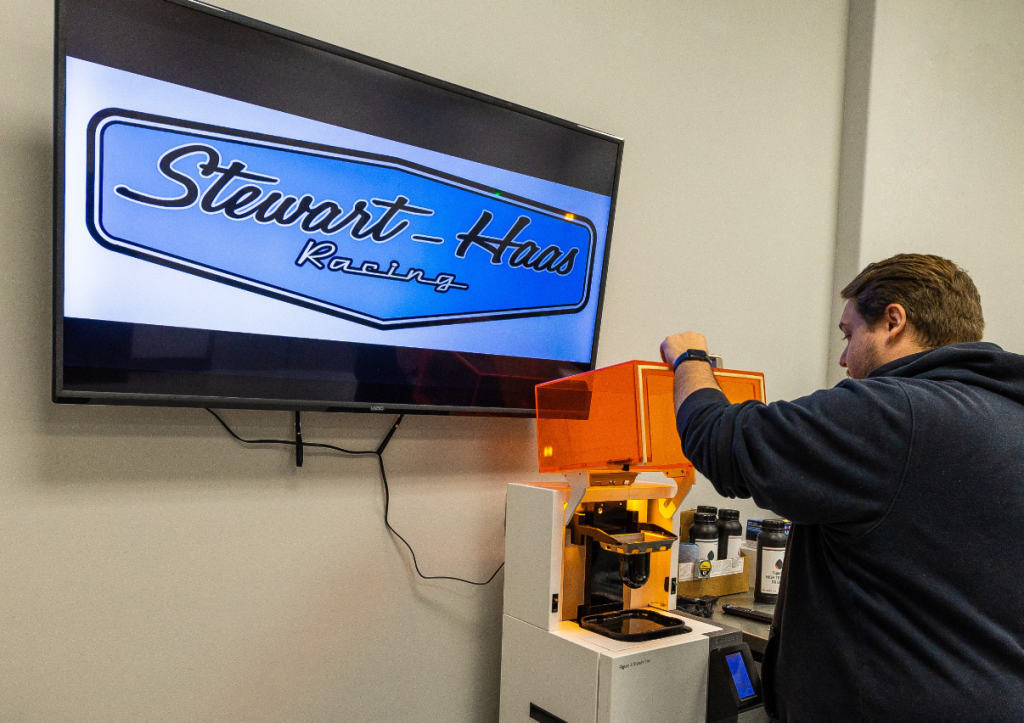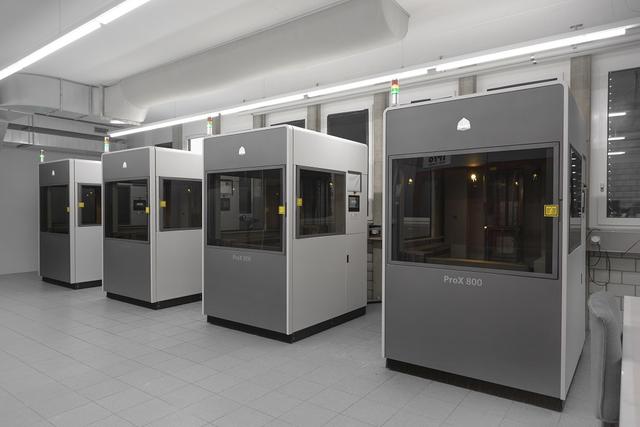US 3D printer manufacturer 3D Systems and American professional stock car racing team Stewart-Haas Racing have announced a technical collaboration to catalyze Stewart-Haas Racing’s engineering expertise for strategic advantage.
The championship-winning NASCAR team has used 3D Systems’ ProX 800 stereolithography and Figure 4 Standalone 3D printers to significantly boost racecar speed and efficiency. Stewart-Haas Racing can quickly build durable parts, along with design and prototyping with quicker iteration, with the assistance of 3D Systems and this three-year technical partnership. Stewart-Haas Racing believes this novel approach will facilitate the team to succeed not just on race days but also “win the innovation race”.
“At Stewart-Haas Racing, it is important that we have a technical partner like 3D Systems to provide the tools we need to develop components that ultimately increase the speed of our racecars,” said Reneau Van Landingham, Production Manager, Stewart-Haas Racing.
“By partnering with Stewart-Haas Racing, we are able to combine their capabilities with the benefit of 3D Systems’ advanced materials and printing technology to develop competitive advantages for them — on and off the track,” said Reji Puthenveetil, Executive Vice President, of Industrial Solutions, 3D Systems.

How will Stewart-Haas Racing benefit from this partnership?
Landingham further explained how the Pro X 800 and Figure 4 printers can print very small, large, precise, smooth-surface finish parts as rapidly as possible. The most precious asset for making its cars faster on the racing track is the speed with that the company can develop the component, print it, and assess it in the wind tunnel.
“The materials that are available for these machines enable us to print a range of prototype parts and track-capable parts for our cars. I am confident that this technical partnership between 3D Systems and Stewart-Haas Racing will enable both companies to win in the additive manufacturing space and on the racetrack,” added Landingham.
Stewart-Haas Racing believes that enhancing automobile parts that improve performance and speed is essential for a NASCAR team’s success. Stewart-Haas Racing employs the ProX 800 to quickly develop and produce large and small aerodynamic parts for wind tunnel testing with a smooth surface finish and precise dimensional accuracy. Stewart-Haas Racing uses 3D Systems’ Figure 4 Standalone to produce camera, TV, pit cart parts, and pit gun parts in addition to other prototypes. To obtain scan data from automotive parts, process it, and develop digital design data for shape deviation contrast, Oqton‘s Geomagic Wrap 3D imaging and scanning software is essential to the company’s production workflow. Likewise, 3D Systems’ 3D Sprint software is employed on both 3D printers to organize and optimize the CAD data and to oversee the additive manufacturing process.
“As part of our work within motorsports, 3D Systems understands how critical speed is — not just on the track, but in technical development to improve car performance,” added Puthenveetil.
Stewart-Haas Racing and 3D Systems will make their season debut of the NASCAR Xfinity Series race on February 18 at Daytona (Florida) International Speedway with the 3D Systems logo on the No. 00 Ford Mustang driven by Cole Custer.

Racing victories with AM technologies
Previously, leading motorsports company Team Penske, purchased a Neo 800 3D printer from 3D printer manufacturer Stratasys. The first Stratasys stereolithography-based 3D printer for Team Penske was marked for rapidly 3D printing scale model components for aerodynamic testing. In addition to the superior quality of the surface finish and the trustworthiness of the Neo system, Matt Gimbel, Production Manager at Team Penske, described how the open materials model for the Neo printers has a significant benefit. Enabling Team Penske to procure materials from any supplier gives material selection flexibility. Furthermore, the large build volume of the Neo800 3D printer (800 mm x 800 mm x 600 mm) allows them to print larger parts with less time spent hand sanding, sectioning, and joining parts together for wind tunnel testing.
Stratasys revealed that British Formula 1 team McLaren Racing 3D prints up to 9,000 parts annually. The company used five Stratasys Neo 800 3D printers to produce multiple aerodynamic parts for its front and rear wing R&D programs, along with large portions of its car’s side bodywork and top body. According to Tim Chapman, the team’s Head of AM, the technology has also enhanced enough for end-use applications and helping the team’s aero-testing initiatives.
Follow this link for all the 3D Printing Trends 2023.
To stay up to date with the latest 3D printing news, don’t forget to subscribe to the 3D Printing Industry newsletter or follow us on Twitter, or like our page on Facebook.
While you’re here, why not subscribe to our Youtube channel? Featuring discussion, debriefs, video shorts, and webinar replays.
Are you looking for a job in the additive manufacturing industry? Visit 3D Printing Jobs for a selection of roles in the industry.
Feature image shows 3D Systems and Stewart-Haas Racing announce a multi-year partnership. Image via 3D Systems.



